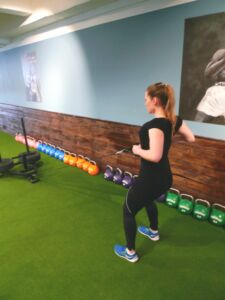Things to do
Flex With Becks-Week 8 : No more spinning around cuz I like it like this
This article is more than 10 years old.
Challenge yourself through dynamic and varied high intensity interval training

Look at that body! Results are showing up
This week’s featured workout is for those with a very busy schedule like myself. It’s only 30 minutes long, but at KayserFitness the shorter the workout, the higher its intensity. So it’s worth preparing yourself mentally for it in advance!
Yesterday proved how high intensity interval training (HIIT) really is the way forward for me. Normally I like going to spinning classes at my gym, but I don’t think I have ever felt so bored before. Although to be fair, the teacher wasn’t very good.
Vary your movement
The human body and brain are built for dynamic and constantly varying movement. It’s good to challenge yourself mentally as well as physically during training, so if you are a fan of running or spinning, be sure to change it up a lot by adding various sprints, jumps etc if you’re doing it on machines at the gym.
Cardio machines are more restrictive than if you’re doing it outdoors where you’ll naturally need to change direction, make corners and adjust to various degrees of steepness, so it’s important not to fall into a rut.
Learning from kids
Another thing I like about Kayser’s training routines is that I am constantly faced with a bunch of exercises and movements my body isn’t used to. As we grow older, our movement range tends to decline significantly, especially if you have a job that leads to long periods of sitting.
Since my accident and my long struggle with injury, I have become a lot more aware of how important movement is for everything – especially for speeding up healing processes. I actually started observing the movements small children do (they totally own grown-ups when it comes to creative movement) and found ways to imitate them and incorporate them into exercise routines.
Office orientation
So make sure you stand up and move around during working hours and change things during workouts.
This week’s side-note: apart from finding a good physio in Copenhagen, added to my search list is now also a good sports bra. When it comes to sprinting, men have no idea how good they have it sometimes!










































